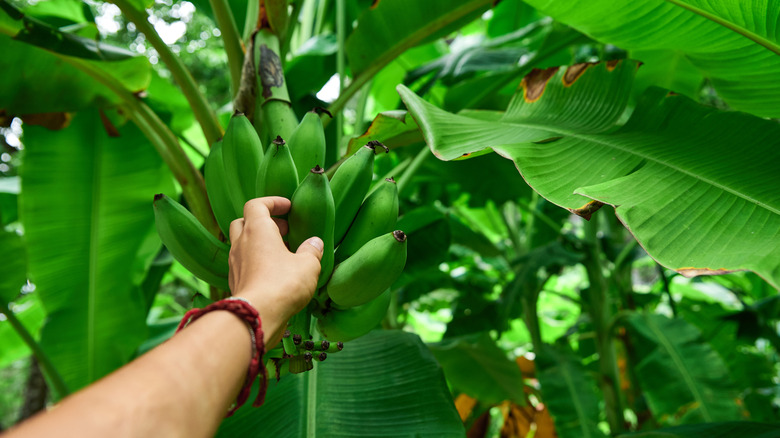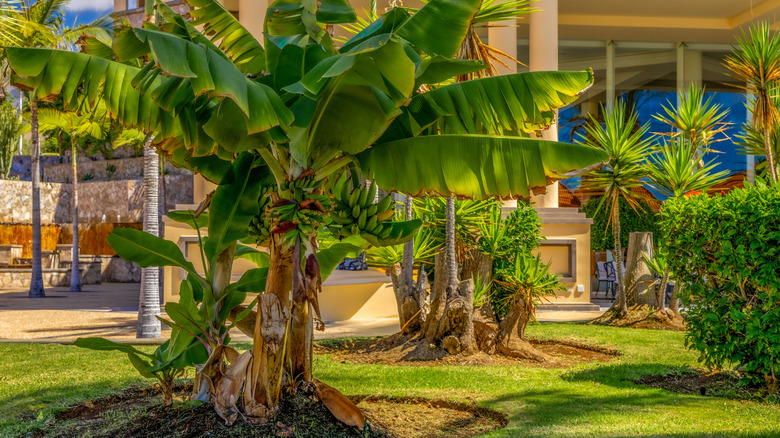Go Bananas This Winter With Fruit Trees That Grow Through The Cold
Have you ever dreamed about living in a tropical paradise and having an orchard full of luscious fruits you can enjoy? Alas, this may just be a dream for many people, but there's one tropical fruit you might be able to grow even if you think that where you live is too cold: bananas. Yes, that's right! There are banana fruit tree varieties that will grow in colder climates as long as you take some precautions to protect the underground rhizome or corm and the pseudo stem from cold damage in the winter. The pseudo stem is the main stem of a banana plant, which is actually not a tree but a herbaceous perennial. This stem is the one that will produce those gorgeous leaves, the stunningly large flowers, and the delectable fruit. Once a stem has fruited, it will never fruit again, but another one will spring from the base to replace it.
You might already know that dwarf fruit trees are perfect for a smaller yard, so if you're keen to try growing a banana plant in your garden, it's best to select one of the more cold-tolerant dwarf varieties, such as 'Rajapuri' or 'Dwarf Orinoco'. These two cultivars produce fruits that are smaller than the Cavendish types you're used to and also differ slightly in taste, sometimes with a bit of a citrus tang to them. Nonetheless, they're extremely tasty, and both can be successfully grown in USDA hardiness zones 7b to 11.
Cold-tolerant banana varieties and how to get them through winter
Probably the best of the cold-tolerant banana plant varieties is the dwarf 'Orinoco' which only reaches a height of 6 feet. The small fruits are thick skinned and great for eating when ripe. Another good choice is the dwarf 'Rajapuri,' which reaches a height of 8 feet and can flower in only 9 months. It produces medium-sized fruit that are delectably sweet. What's more, it will look great in your yard with its massive leaves which can be up to 3 feet wide. But if you're living further north in a zone that's not suitable for these, there are other fruit trees you might not be aware of that can grow in colder climates.
Before temperatures threaten to drop below 28 to 30 degrees Fahrenheit, you need to protect the pseudo stems from freezing because this kill the foliage and stems above the ground. While new ones are likely to grow in the spring, these won't have enough time in cooler regions to produce fruit, as this can take between 10 to 15 months. The best way to overwinter your plants is to build a cage around the stems and then fill this with something like straw or dry leaves. You need to ensure that the cage is tall enough to cover the stem right up to the base of the leaves and that you fill in all the crevices with the insulating material. Finally, if you're lucky enough to have one, you might want to explore a range of fruits that will thrive in your greenhouse.

